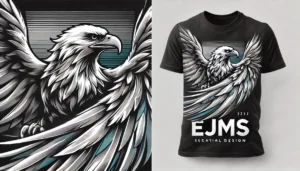A Comprehensive Guide to Understanding doi: 10.25236/icallh.2021.044
Hey there! Xenome here, and today, I’m excited to dive into something that might seem a bit technical at first but is incredibly valuable for anyone navigating the world of academic research and publications. We’re talking about doi: 10.25236/icallh.2021.044—a unique identifier tied to academic papers, specifically from the 2021 ICALLH conference.
Now, I know what you’re thinking: Why should I care about a DOI? Well, if you’ve ever tried to find a specific research paper or academic source, you’ll understand the frustration of vague citations or broken links. That’s where DOIs, or Digital Object Identifiers, come to the rescue.
What Is a DOI, and Why Does It Matter?
Let’s start with the basics. A DOI, or Digital Object Identifier, is like a digital fingerprint for research papers. When you see doi: 10.25236/icallh.2021.044, you’re looking at a permanent link to a specific academic paper presented at the ICALLH 2021 conference. This unique code ensures you can always track down the original source, no matter how the web changes.
For researchers, students, or just curious minds, DOIs help you stay on track, ensuring you don’t waste time hunting down elusive articles.

Why Should You Pay Attention to doi: 10.25236/icallh.2021.044?
One of the most common concerns I’ve heard is, Why bother with DOIs when we have Google? Trust me, I get it—Google is a lifesaver. But when it comes to academic credibility and precision, you can’t always rely on search engines. For example, if you’re referencing specific data or findings from the ICALLH 2021 conference, that DOI ensures your citation is accurate and up-to-date.
How Can I Use doi: 10.25236/icallh.2021.044?
If you’ve ever been tasked with writing a research paper or even just verifying a source for your own understanding, a DOI is your best friend. Here’s how you can make the most of it:
- Copy and paste the DOI into a DOI resolver (such as doi.org) to pull up the full article.
- Cite with confidence: When using doi: 10.25236/icallh.2021.044, you’re linking directly to the original research. This gives your work more credibility.
- Stay current: The DOI keeps track of any updates or changes to the article, ensuring you’re always working with the latest information.
My Personal Experience with DOIs
Let me share a quick story. Not too long ago, I was neck-deep in a project that required me to pull up research papers for a literature review. I bookmarked a ton of pages, thinking I was set. Then, a week later, half the links were dead. Frustrating, right? That’s when I realized the power of DOIs. By using them, I didn’t have to worry about broken links or outdated URLs. It was like having a permanent map to every article I needed. Trust me, once you start using them, you won’t look back!
Breaking Down the Complexities
You might wonder if every academic paper has a DOI like doi: 10.25236/icallh.2021.044. In short, no. However, the more reputable or widely published a paper is, the more likely it is to have one. This is because publishers understand the need for reliable access. Without a DOI, finding some papers can feel like searching for a needle in a haystack.
Here are some key points to remember:
- Accessibility: DOIs make finding academic work a breeze.
- Permanence: Unlike standard URLs, DOIs don’t change.
- Credibility: Using a DOI in your references boosts the professionalism and reliability of your work.
How to Incorporate DOIs into Your Work
Whether you’re writing your thesis, an essay, or just browsing for knowledge, integrating DOIs into your workflow is simple. Here’s how:
- Search and Cite: Start by searching for articles related to your topic, like those connected to doi: 10.25236/icallh.2021.044. Then, use that DOI directly in your references.
- Stay Organized: Keeping track of your DOIs ensures that you’ll never lose access to the research.
- Make Your Work Stand Out: In academic circles, providing accurate DOIs in citations shows that you’ve done your homework, setting your work apart.

Engage With Me
Now, I’d love to hear from you. Have you had any frustrating experiences tracking down academic papers? Or maybe you’ve found a great resource thanks to a DOI like doi: 10.25236/icallh.2021.044? Drop a comment below and let’s share our experiences. You’d be surprised how many people have gone through the same research struggles!
Wrapping It Up
Using DOIs like doi: 10.25236/icallh.2021.044 isn’t just for academics—it’s a tool anyone can benefit from. Whether you’re a student, a researcher, or someone just trying to ensure their sources are solid, this digital identifier keeps your research on point. Plus, the added reliability and convenience it offers are unmatched.
Remember, as you move forward with your own research or writing, keep DOIs in mind. It’s a simple step that can make a big difference in the accuracy and credibility of your work.
What’s your biggest takeaway about DOIs? Let me know in the comments, and feel free to share this guide with anyone you think could benefit from it!














Post Comment